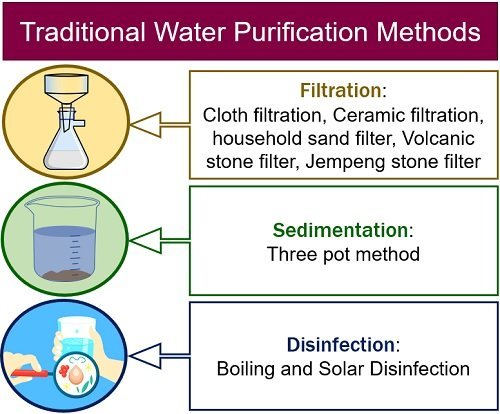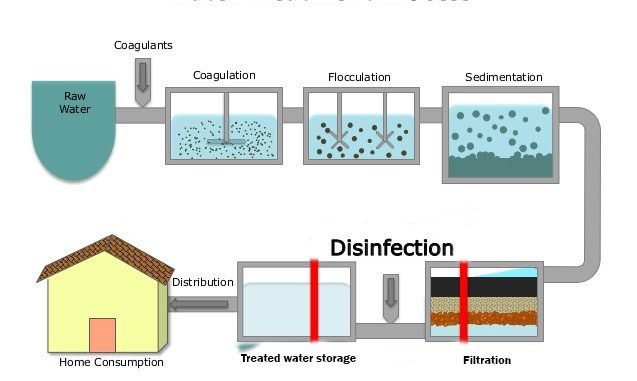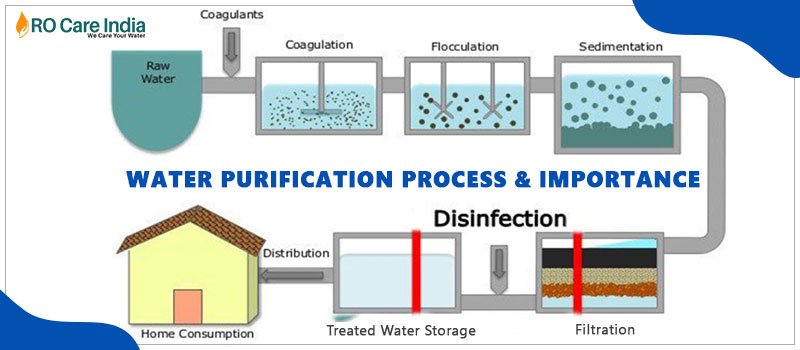If you’re looking for clean, pure water, there are a variety of water purification methods available to meet your needs. From simple filtration systems to advanced technologies, these methods can remove impurities and contaminants, ensuring that the water you drink is safe and refreshing. Brands like 5.11 Tactical, Blackhawk, Gerber Gear, Leatherman, and Benchmade are known for their high-quality products, and they also offer reliable water purification solutions. Whether you’re camping, hiking, or simply want to improve the taste of your tap water, there’s a method out there that’s perfect for you. So, let’s explore the world of water purification and discover which method suits your lifestyle best.
Different Water Purification Methods
Water purification is the process of removing contaminants and impurities from water, making it safe for drinking and various other applications. There are several different water purification methods available, each with its own advantages and disadvantages. In this article, we will explore these methods and provide you with a comprehensive understanding of their processes and effectiveness.
Boiling
Boiling water is one of the most common and oldest methods of water purification. It involves bringing the water to its boiling point and maintaining it for a certain period of time. This process kills or inactivates most types of pathogens, including bacteria, viruses, and parasites, thereby making the water safe to drink.
Boiling water is highly effective in eliminating harmful organisms and is particularly useful in emergencies or situations where access to other purification methods is limited. It is a simple and reliable method that requires only a heat source and a container.
However, there are some disadvantages to boiling water. It does not remove chemical contaminants or dissolved solids such as salts. Boiling water also consumes energy and can be time-consuming, especially if you need to purify large quantities. Additionally, the taste of boiled water may be altered due to the removal of dissolved oxygen.
Chemical Disinfection
Chemical disinfection involves the use of certain chemicals to kill or deactivate microorganisms in water. There are several chemicals commonly used for this purpose, including chlorine, iodine, and chlorine dioxide.
Chlorine is one of the most widely used chemical disinfectants. It effectively destroys most bacteria and viruses but is less effective against certain types of parasites. Iodine, on the other hand, is effective against a broader range of microorganisms and is commonly used in portable water purification tablets and drops. Chlorine dioxide is highly effective in killing a wide range of pathogens and is often used for large-scale water treatment.
Chemical disinfection methods have their advantages. They are generally inexpensive, easy to use, and can be employed in situations where other purification methods are not feasible. Chemical disinfection can also provide residual protection, meaning it continues to protect against recontamination even after the initial treatment.
However, there are also some drawbacks to chemical disinfection. Some people may be sensitive or allergic to the chemicals used. Chemicals such as chlorine can produce an unpleasant taste and odor in the water. Moreover, chemical disinfection methods may not effectively remove certain chemical contaminants or dissolved solids.

Filtration
Filtration is another widely used method for water purification. It involves passing water through various types of filters to remove impurities and contaminants. There are different types of water filters available, including activated carbon filters, ceramic filters, and mechanical filters.
Activated carbon filters are commonly used to remove organic compounds, chlorine, and certain chemicals. They work by adsorbing the impurities onto their surface. Ceramic filters are effective at removing bacteria, protozoa, and some viruses. They function by trapping these microorganisms in their tiny pores. Mechanical filters, such as those made of cloth or mesh, physically block larger particles and sediment from passing through.
Filtration methods have several advantages. They can effectively remove both physical and chemical impurities, including sediment, bacteria, viruses, and chemicals. Some filtration systems also come with additional features such as UV or chemical disinfection, providing a multi-stage purification process. Filtration methods are generally easy to use and do not require a source of heat or electricity.
However, there are some disadvantages to filtration. Filter systems may vary in terms of their effectiveness and the size of particles they can remove. Some filters may require regular maintenance or replacement, which can add to the cost. Additionally, certain contaminants, such as dissolved salts or heavy metals, may not be efficiently removed by filtration alone.
Distillation
Distillation is a water purification method that involves boiling water and then collecting the resulting vapor by condensation. The process effectively removes most impurities, including minerals, chemicals, and microorganisms.
Distillation works by heating water to its boiling point, causing it to evaporate. The vapor is then cooled and condensed back into liquid form, leaving behind any impurities. This method is particularly effective at removing dissolved solids, heavy metals, and other contaminants that have a higher boiling point than water.
Distillation has its advantages. It can effectively remove a wide range of impurities, making it suitable for purifying contaminated or brackish water. The process is also reliable, as the boiling and condensation stages provide thorough purification. Distilled water has a neutral taste and is ideal for use in various applications, including drinking and cooking.
However, there are some drawbacks to distillation. The process can be energy-intensive, requiring a heat source to continuously boil the water. It can also be time-consuming, especially for large quantities of water. Distillation removes almost all minerals from water, including essential ones, which may affect its taste and nutritional value.

UV Radiation
UV radiation, specifically UV-C light, is a water purification method that utilizes the germicidal properties of ultraviolet light. It works by exposing water to UV-C light, which destroys the DNA of microorganisms, preventing them from reproducing.
UV radiation is highly effective in disinfecting water and is capable of destroying a wide range of bacteria, viruses, and parasites. It does not introduce any chemicals or alter the taste or odor of the water. UV purification is also relatively fast and can treat large volumes of water with minimal maintenance.
However, there are a few disadvantages to UV radiation. It requires a power source and can be dependent on electricity, making it less suitable for off-grid or emergency situations. UV light is only effective at the moment of exposure, meaning the treated water can become recontaminated after purification. UV radiation also does not remove chemical contaminants or dissolved solids.
Reverse Osmosis
Reverse osmosis (RO) is a water purification method that utilizes a semipermeable membrane to remove impurities from water. It is particularly effective at removing dissolved salts, minerals, and other contaminants.
The reverse osmosis process involves exerting pressure on the water to push it through the membrane, while leaving behind the impurities. The purified water is collected on one side of the membrane, while the concentrated waste, known as brine or reject water, is flushed away.
Reverse osmosis has its advantages. It can effectively remove a wide range of impurities, including dissolved solids, heavy metals, bacteria, and viruses. RO systems are available in various sizes, making them suitable for both residential and commercial applications. The purified water produced by reverse osmosis is generally of high quality and has a neutral taste.
However, reverse osmosis also has some disadvantages. It requires a power source to create the necessary pressure, making it dependent on electricity. The process can be slow and may result in significant water waste due to the production of brine. RO systems also require regular maintenance, including membrane replacement, to ensure their optimal performance.

Activated Carbon
Activated carbon is a widely used material in water filtration systems. It works by adsorbing impurities onto its surface, effectively removing organic compounds, chemicals, and odors from water.
Activated carbon filters water through a process called adsorption, where the impurities are attracted to the surface of the carbon material. This method is particularly effective at removing chlorine, volatile organic compounds (VOCs), and certain pesticides. It can also improve the taste and odor of the water.
Activated carbon has its advantages. It is a commonly available and affordable filtration medium. It effectively removes a range of impurities and can be used in combination with other filtration methods for enhanced purification. Activated carbon filters are generally easy to install and require minimal maintenance.
However, there are also some limitations to activated carbon filtration. It is not effective at removing certain dissolved solids, heavy metals, or microorganisms. The adsorption capacity of activated carbon diminishes over time, necessitating regular replacement or reactivation. Additionally, activated carbon filters may not be suitable for highly turbid water with large particulate matter.
Ozone Treatment
Ozone treatment is a water purification method that uses ozone gas to disinfect and oxidize water. Ozone (O3) is a highly reactive form of oxygen that destroys bacteria, viruses, and other organic contaminants.
The ozone purification process involves injecting ozone gas into the water, either directly or through ozone generators. The ozone oxidizes and destroys microorganisms and organic compounds, making the water safe for consumption. The excess ozone quickly decomposes back into oxygen, leaving no residual taste or odor.
Ozone treatment has its advantages. It is a powerful disinfectant and can effectively destroy a wide range of pathogens, including bacteria, viruses, and parasites. Ozone rapidly reacts with contaminants and provides efficient purification. It does not introduce chemicals and does not alter the water’s pH.
However, there are also a few disadvantages to ozone treatment. It requires specialized equipment for ozone generation and injection. Ozone is less stable than other disinfectants and requires careful control of dosage and contact time. The process can be energy-intensive, especially for large-scale applications. Ozone treatment is also less effective in removing chemical contaminants or dissolved solids.

Electrodeionization
Electrodeionization (EDI) is a water purification method that combines ion exchange and electrochemical processes to remove impurities from water. It is commonly used for producing high-purity water for various industries, including pharmaceuticals and electronics.
The electrodeionization process utilizes ion exchange membranes and electricity to continuously remove ions from water. It separates the impurities into separate streams, leaving purified water behind. EDI is effective at removing dissolved salts, minerals, and other ions.
Electrodeionization has its advantages. It provides a chemical-free water purification method that requires minimal maintenance. The process is continuous, highly efficient, and can produce large quantities of purified water. EDI systems are also automated and can be easily integrated into existing water treatment systems.
However, there are some limitations to electrodeionization. It requires a power source for its operation, making it dependent on electricity. EDI may not effectively remove certain chemical contaminants or dissolved solids without pre-treatment. The systems can also be expensive to install and maintain.
In conclusion, there are several different water purification methods available, each with its own set of advantages and limitations. Boiling, chemical disinfection, filtration, distillation, UV radiation, reverse osmosis, activated carbon, ozone treatment, electrodeionization – all these methods have their unique processes and effectiveness in removing impurities from water. The choice of method depends on various factors, including the type of contaminants, availability of resources, treatment objectives, and personal preferences. By understanding the different methods and their pros and cons, you can select the most suitable water purification method for your specific needs.
